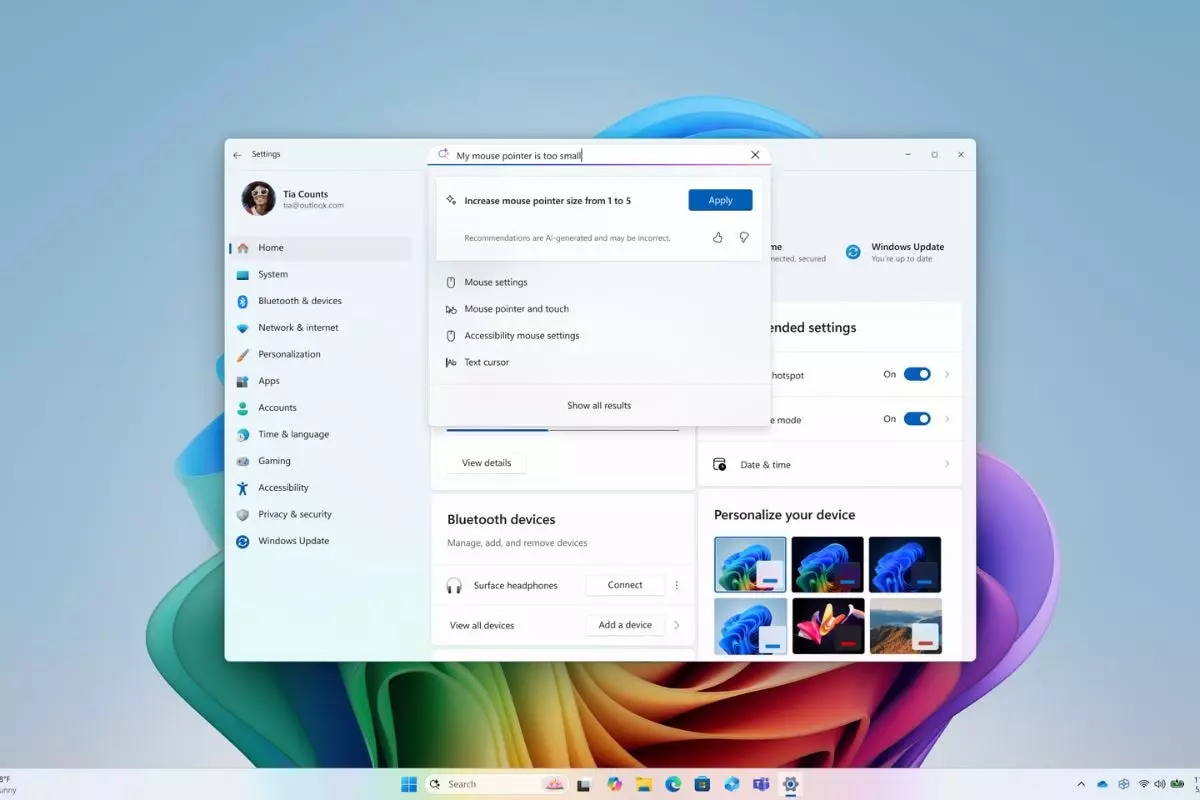Microsoft’s recent unveiling of the Mu AI model represents a significant leap in on-device computing. While the company’s ambition to create intelligent systems that operate locally is commendable, it also raises a critical question: is local AI truly beneficial, or can it serve as a gateway to shortcomings in user experience? On the surface, local processing promises speed and privacy, but digging deeper reveals potential pitfalls that could hinder its development and acceptance.
The Mu AI model operates entirely on the user’s device, leveraging its neural processing unit (NPU) to enhance performance. Microsoft touts this approach as a solution to minimize reliance on cloud computing, a move that appeals to privacy-conscious consumers. However, the reality is that by prioritizing local processing, Microsoft seems to be diluting the power of its broader AI capabilities. In an ecosystem increasingly connected to the cloud, one must question whether confining AI to local resources will stymie its intelligence and adaptability.
The Promise of Intelligent Settings
The new AI agents feature in Windows 11 allows users to issue commands in natural language, prompting the system to adjust settings autonomously. This ambitious feature aims to streamline user interactions with technology, creating a more intuitive experience. However, the question looms: will such systems truly understand the nuances of human language, or will they be relegated to rudimentary interpretations?
Microsoft claims to have developed Mu with a formidable architecture, boasting 330 million token parameters. Yet, as anyone who has tried to use similar AI features knows, the chasm between understanding a command and executing it seamlessly can be vast. The reliance on middle-ground parameters makes me apprehensive about the potential for frustration among users when the AI misinterprets commands or fails to grasp the complexities familiar to human communication.
The Illusion of Efficiency
According to Microsoft, Mu’s architecture allows it to respond at impressive speeds, claiming it can process over 100 tokens per second. While this stat seems alluring, speed without accuracy can lead to disastrous results. What good is a fraction-of-a-second response if it doesn’t yield the desired outcome? Users seeking efficient interactions may find themselves locked in a frustrating cycle of ambiguity when the AI misunderstands their request, falling back to traditional keyword searches when clarity is lacking.
Furthermore, Microsoft’s approach to training the model raises additional concerns. They claim to have enhanced Mu’s capabilities through the inclusion of over 3.6 million examples, using methods such as synthetic labeling and noise injection. Yet, this broad application of training data poses risks of overfitting: will Mu be able to analyze and respond effectively to unique or uncommon queries, or will it merely regurgitate what it has been trained on? Without a robust handling of linguistic diversity, the application may prove useful only in limited scenarios.
Complex Settings Amid a User-Friendly Facade
The frustration doesn’t end there. The reality remains that many system settings are interrelated and, more importantly, context-sensitive. Mu, as described, struggles with multi-word queries yet addresses this by suggesting vague keyword searches. This decision risks throwing users back into an overwhelming maze of technical jargon—a stark contradiction to the very user-focused environment Microsoft seeks to create.
The adaptive nature of the AI model is still a work in progress. Users expect an intelligent system capable of learning from context, yet Microsoft’s current focus on the most commonly used settings risks alienating a significant portion of users who may not fit the norm. The sad irony lies in the fact that while promoting efficiency and convenience, these limitations may inadvertently create barriers, rather than eliminating them.
By introducing Mu, Microsoft has taken a bold step into local AI, leveraging the potential for enhanced user experience and privacy. Yet, it is crucial to maintain perspective: innovation should never come at the cost of usability. The promise of a seamless, intelligent interface must be met with the reality of its practical application. If Microsoft is keen on solidifying its role in the AI landscape, it must not underplay user expectations and experiences in its race toward the future. Local AI has promise, but unless it evolves with its users in mind, it risks becoming just another tech experiment with unrealized potential.

Leave a Reply